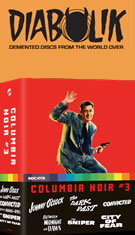



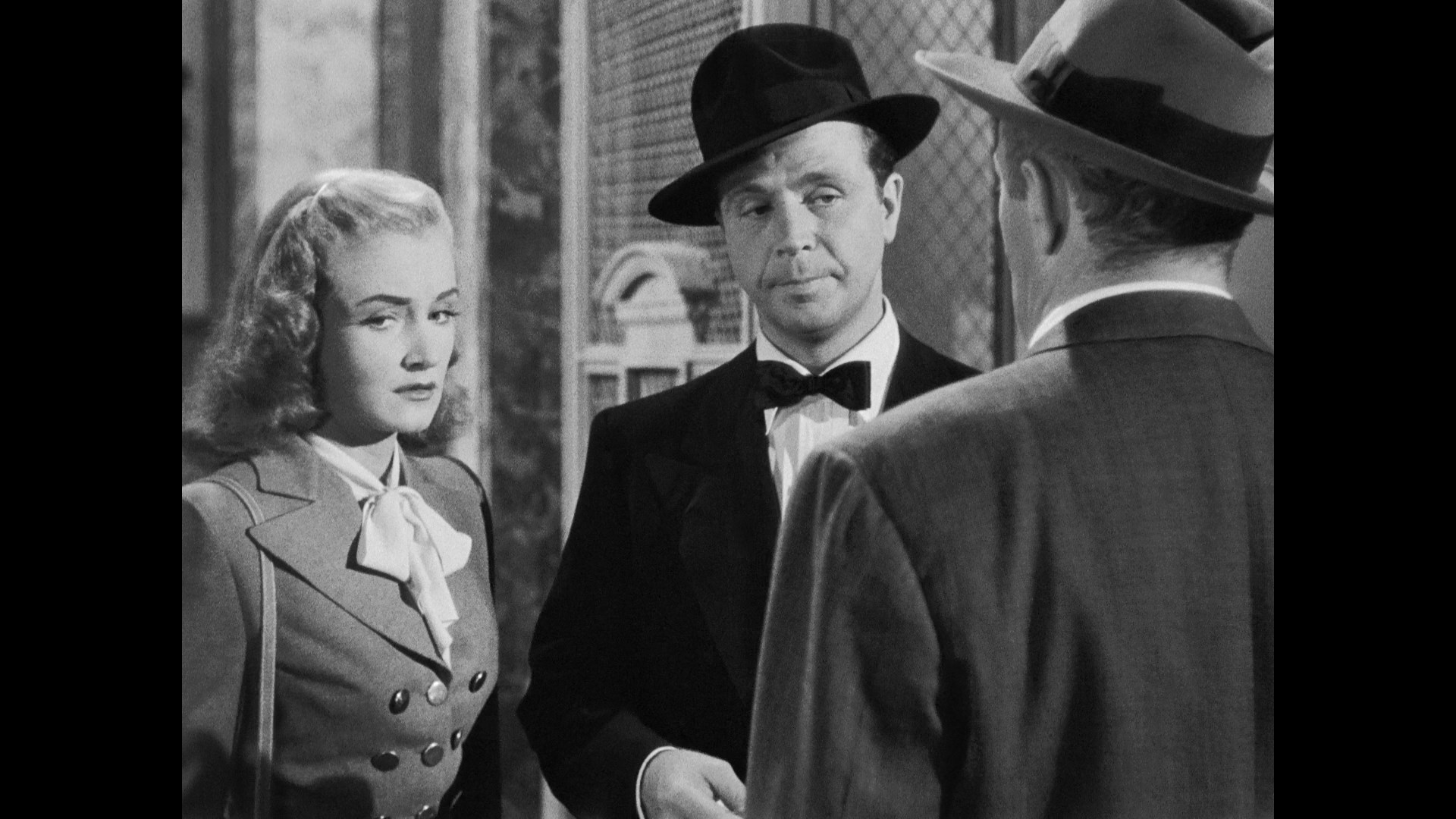 you didn't get enough 1940s and '50s urban angst, backstabbing, and shadowy style with Columbia Noir #1 and Columbia Noir #2 from Indicator, here's another
you didn't get enough 1940s and '50s urban angst, backstabbing, and shadowy style with Columbia Noir #1 and Columbia Noir #2 from Indicator, here's another 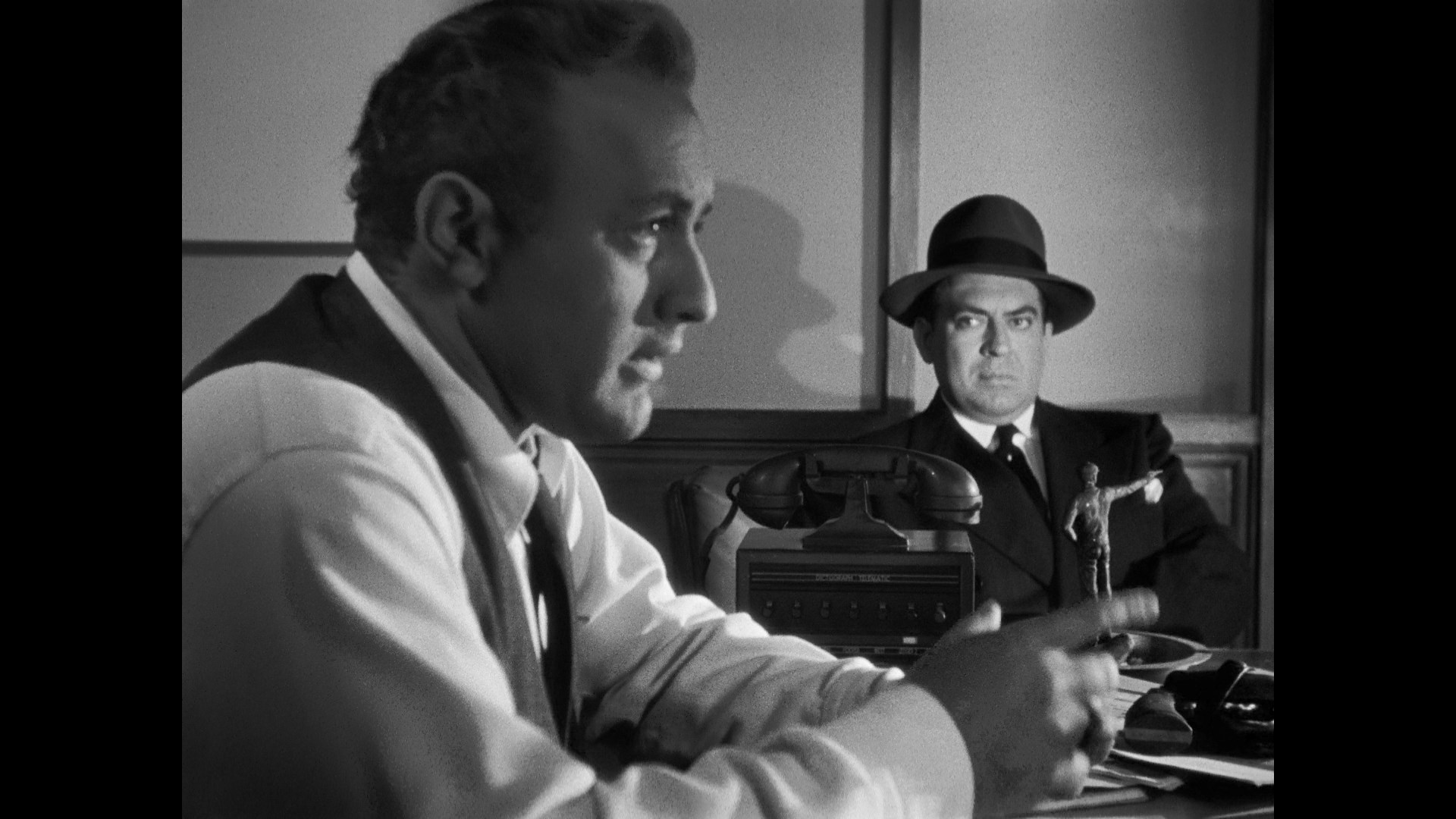 jam-packed box with six gritty crime thrillers in a limited 6,000-unit U.K. set. This time all of the films are making their global Blu-ray premieres, a factor that should easily make this an essential purchase if you love regular doses of 1080p noir.
jam-packed box with six gritty crime thrillers in a limited 6,000-unit U.K. set. This time all of the films are making their global Blu-ray premieres, a factor that should easily make this an essential purchase if you love regular doses of 1080p noir. 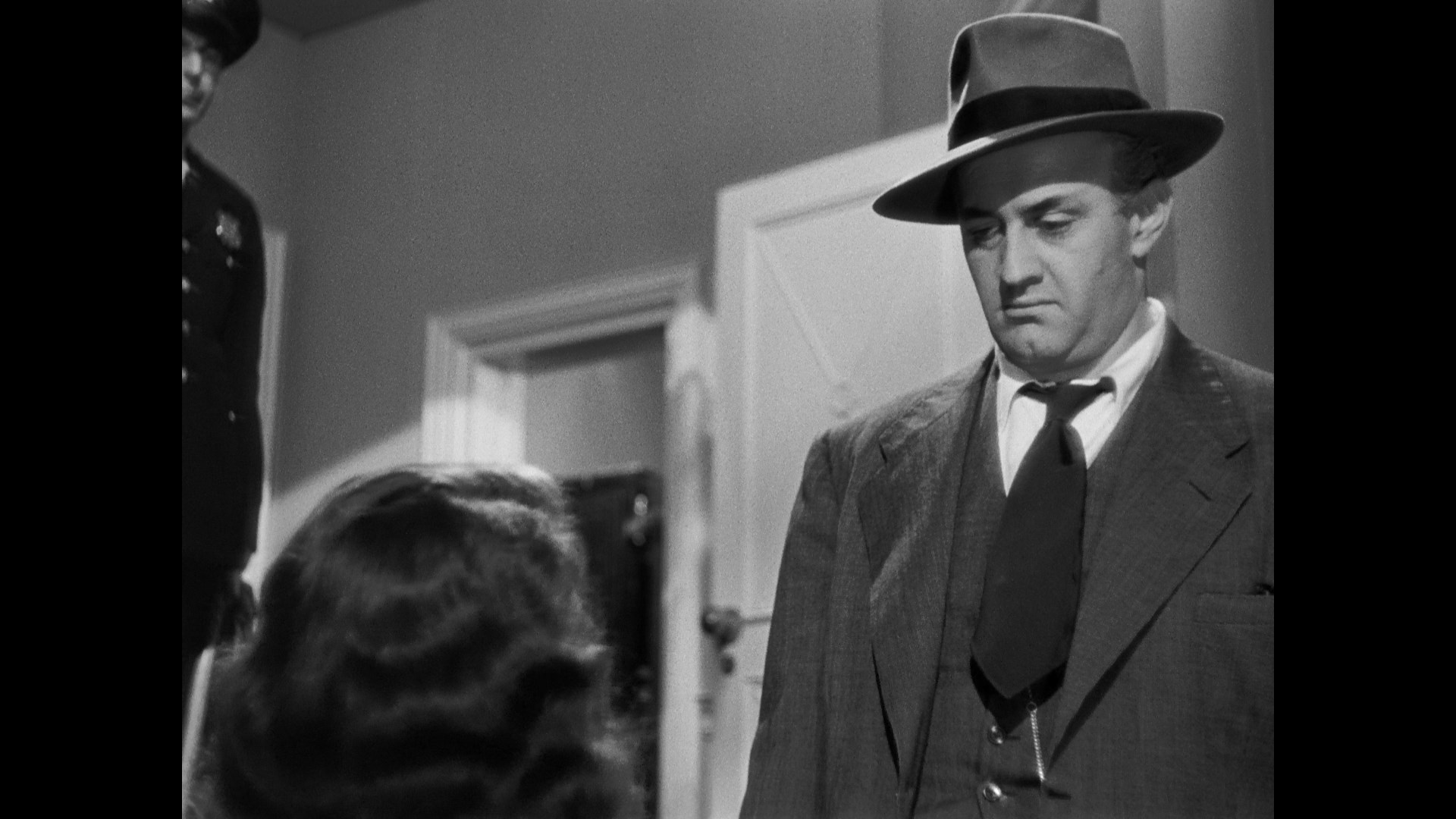 this is a modest but engaging little
this is a modest but engaging little 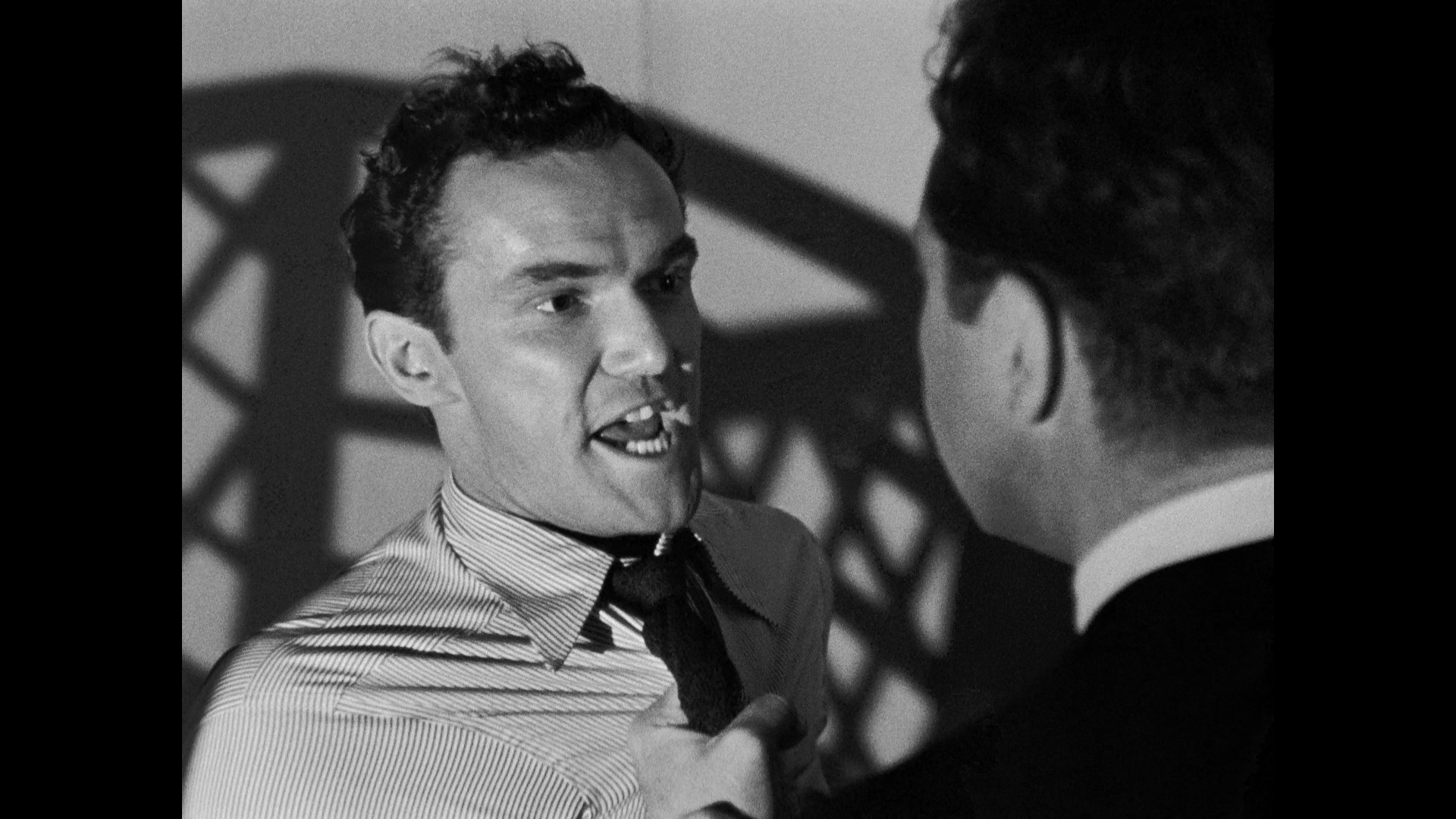 thriller that also functions nicely as a character study about a man who's tied to everything without any deep commitments inside himself. First issued on DVD in 2014 as part of TCM's Columbia Pictures Film Nor Classics IV set (packaged with So Dark the Night, Walk a Crooked Mile, Between Midnight and Dawn, and Walk East On Beacon!), the film looks excellent here on Blu-ray with another sparkling Sony scan that's comparable to the strongest entries in the earlier collections. As with the others in this set, the English 2.0 LPCM mono track is also in faultless condition and comes with improved English SDH subtitles. A new commentary by film historian Jim Hemphill is very thoroughly researched and, though covering many aspects of the film, focuses primarily on Rossen including his run-ins with HUAC, his early days in Hollywood, and the recurring leftist themes in his work that found full fruition with his bigger hits later on as well as some cinematic disappointments. Video extras include the theatrical trailer ("Hard... Fast... Dangerous!"), a gallery of 40 stills and advertising odds and ends, and Not One Shall Die (29m28s), a 1957 short by David Lowell Rich (with many of the personnel from this film) featuring Guy Madison, Felicia Farr, and Agnes Moorehead for the United Jewish Appeal about a doctor who, upon arriving at a refugee camp, flashes back to how he lost his wife and could get a new start in Israel. Though she doesn't really come into play until the second half, Moorehead is easily the standout element here as an Egyptian refugee en route to a new home. Though taken from an aged element, it's a welcome inclusion here and presented from what is likely the best surviving material. As usual, you also get a thematically relevant Three Stooges short; in this case it's 1936's Whoops, I'm an Indian! (17m24s), with Moe, Larry, and Curly as casino dealers in Davy Crockett hats whose crooked tactics get them run out of own, prompting them to come up with new identities (which you can probably guess from the title). Much slapping and confusion ensue. Like the rest of the Columbia Stooges shorts we've gotten, this
thriller that also functions nicely as a character study about a man who's tied to everything without any deep commitments inside himself. First issued on DVD in 2014 as part of TCM's Columbia Pictures Film Nor Classics IV set (packaged with So Dark the Night, Walk a Crooked Mile, Between Midnight and Dawn, and Walk East On Beacon!), the film looks excellent here on Blu-ray with another sparkling Sony scan that's comparable to the strongest entries in the earlier collections. As with the others in this set, the English 2.0 LPCM mono track is also in faultless condition and comes with improved English SDH subtitles. A new commentary by film historian Jim Hemphill is very thoroughly researched and, though covering many aspects of the film, focuses primarily on Rossen including his run-ins with HUAC, his early days in Hollywood, and the recurring leftist themes in his work that found full fruition with his bigger hits later on as well as some cinematic disappointments. Video extras include the theatrical trailer ("Hard... Fast... Dangerous!"), a gallery of 40 stills and advertising odds and ends, and Not One Shall Die (29m28s), a 1957 short by David Lowell Rich (with many of the personnel from this film) featuring Guy Madison, Felicia Farr, and Agnes Moorehead for the United Jewish Appeal about a doctor who, upon arriving at a refugee camp, flashes back to how he lost his wife and could get a new start in Israel. Though she doesn't really come into play until the second half, Moorehead is easily the standout element here as an Egyptian refugee en route to a new home. Though taken from an aged element, it's a welcome inclusion here and presented from what is likely the best surviving material. As usual, you also get a thematically relevant Three Stooges short; in this case it's 1936's Whoops, I'm an Indian! (17m24s), with Moe, Larry, and Curly as casino dealers in Davy Crockett hats whose crooked tactics get them run out of own, prompting them to come up with new identities (which you can probably guess from the title). Much slapping and confusion ensue. Like the rest of the Columbia Stooges shorts we've gotten, this 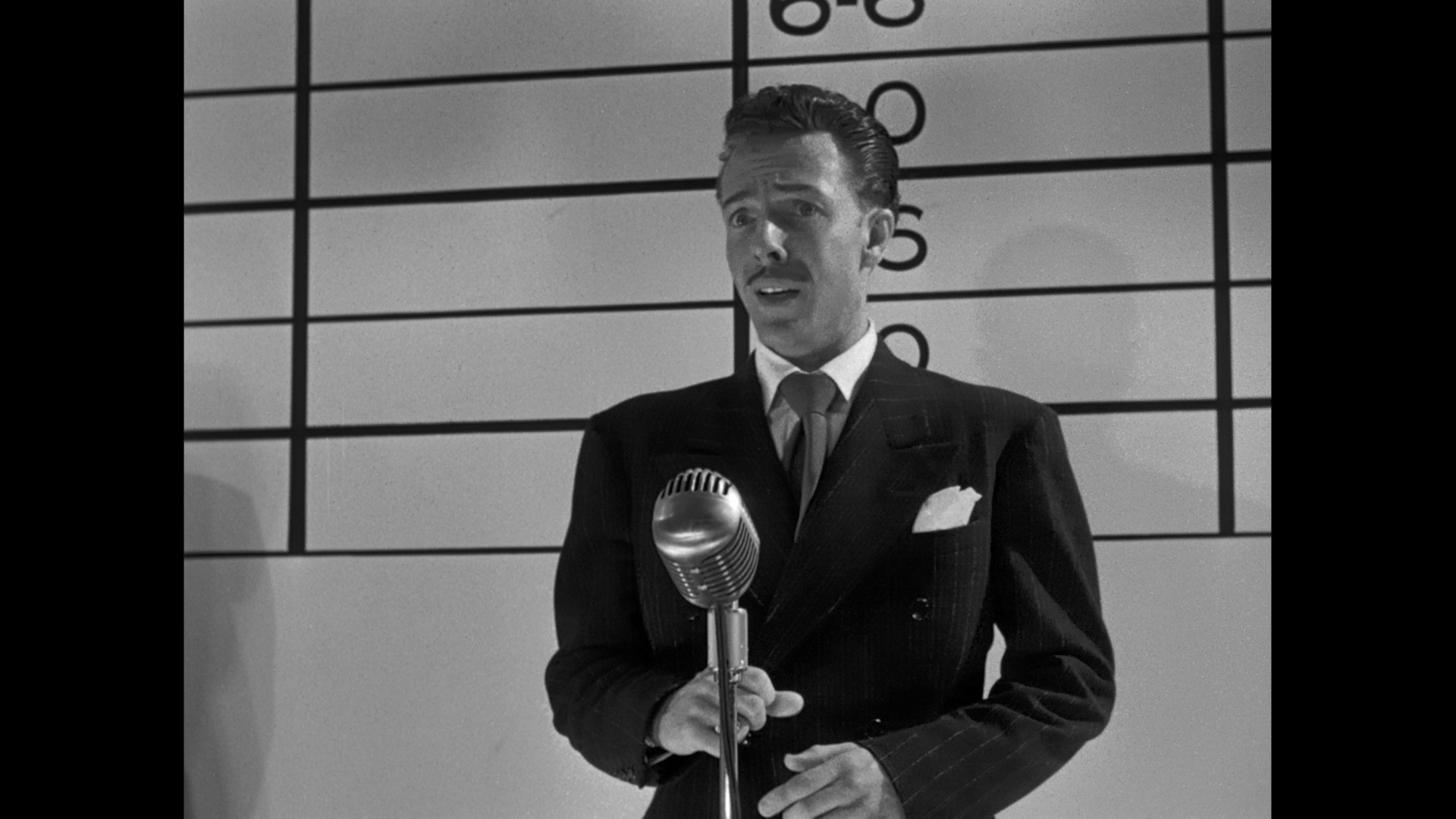 comes from their top-tier restoration series and looks great.
comes from their top-tier restoration series and looks great.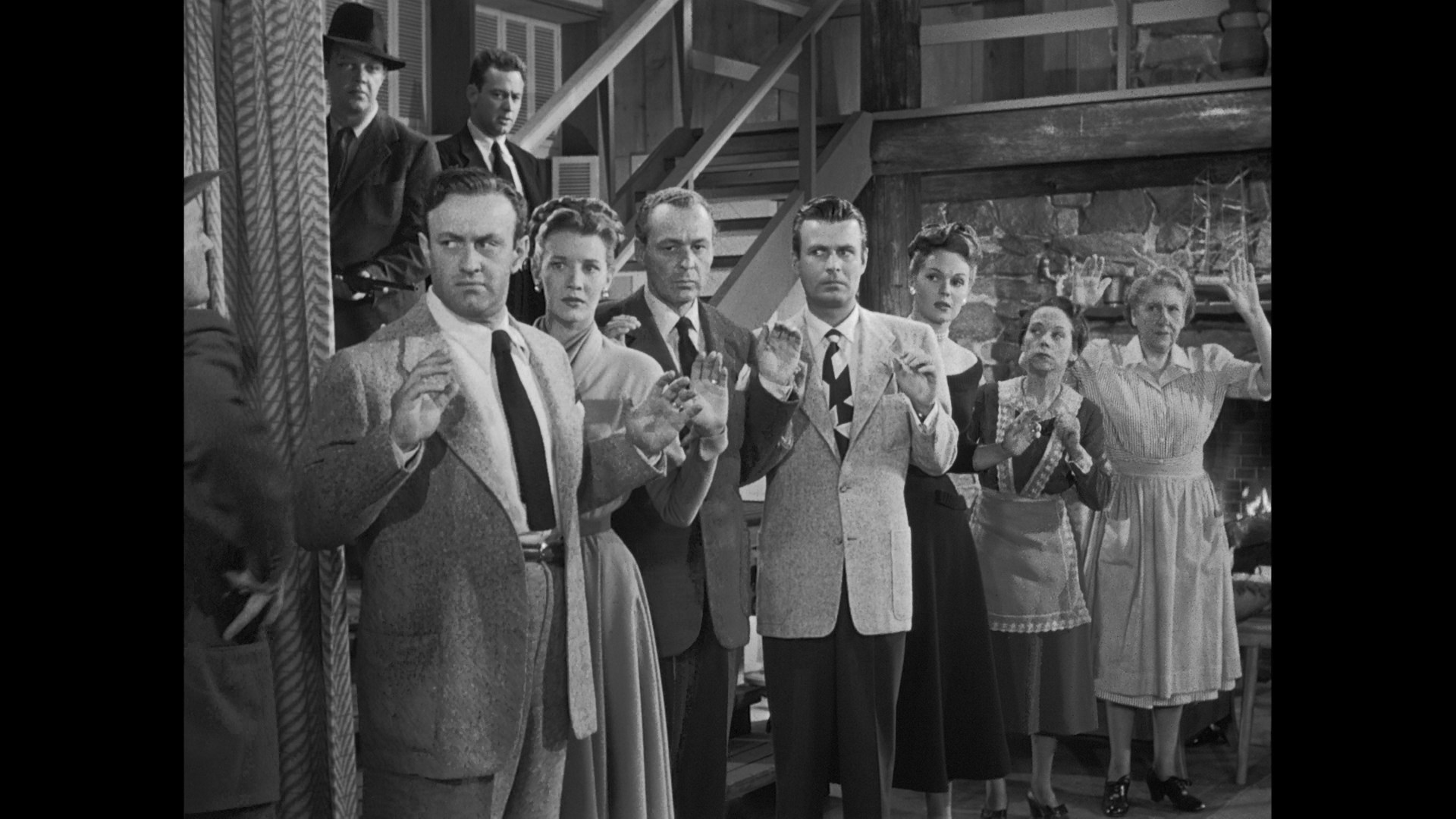
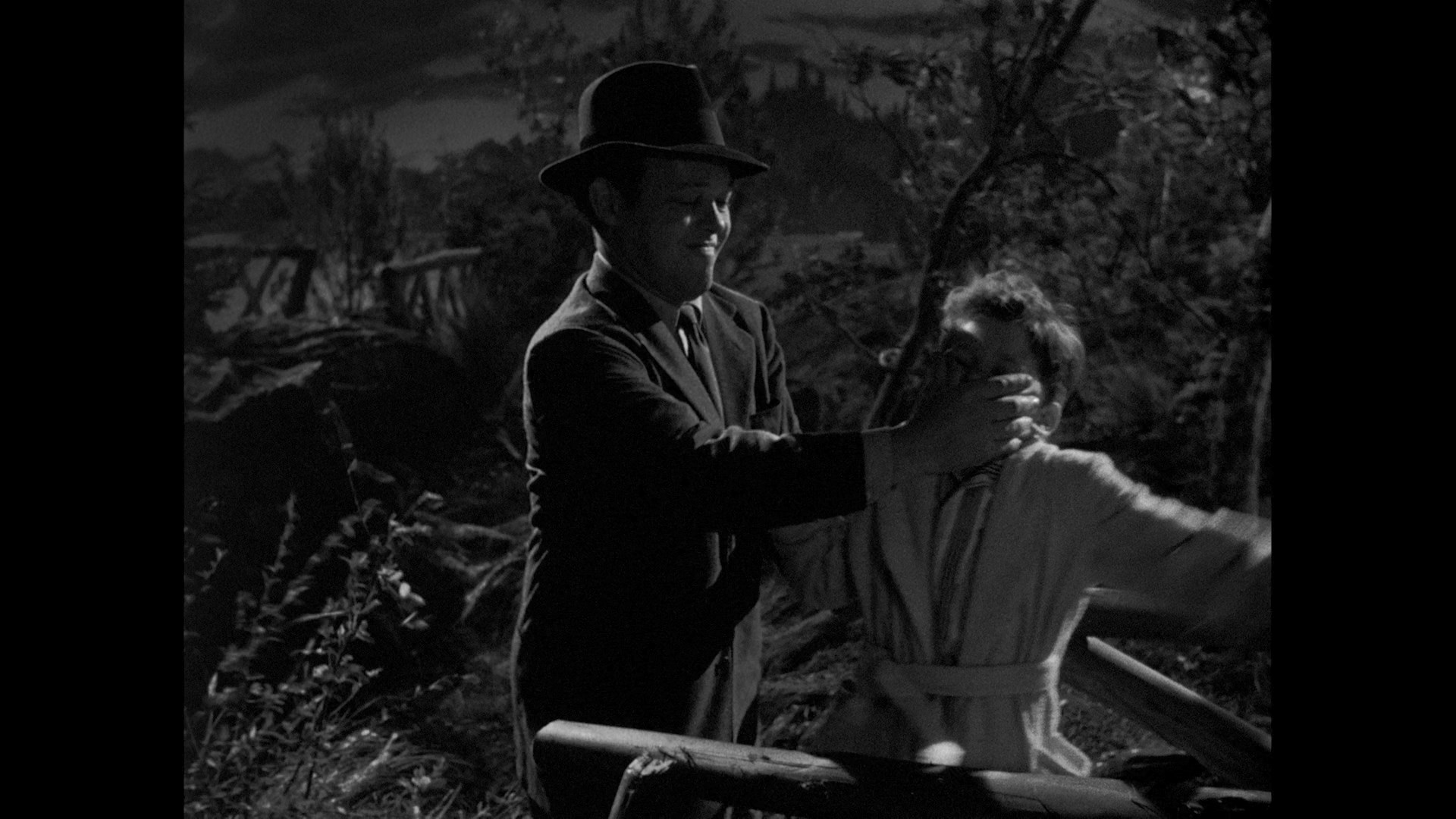 an unflattering haircut), who had just come back from World War II and was gladly taken back by Columbia as their
an unflattering haircut), who had just come back from World War II and was gladly taken back by Columbia as their 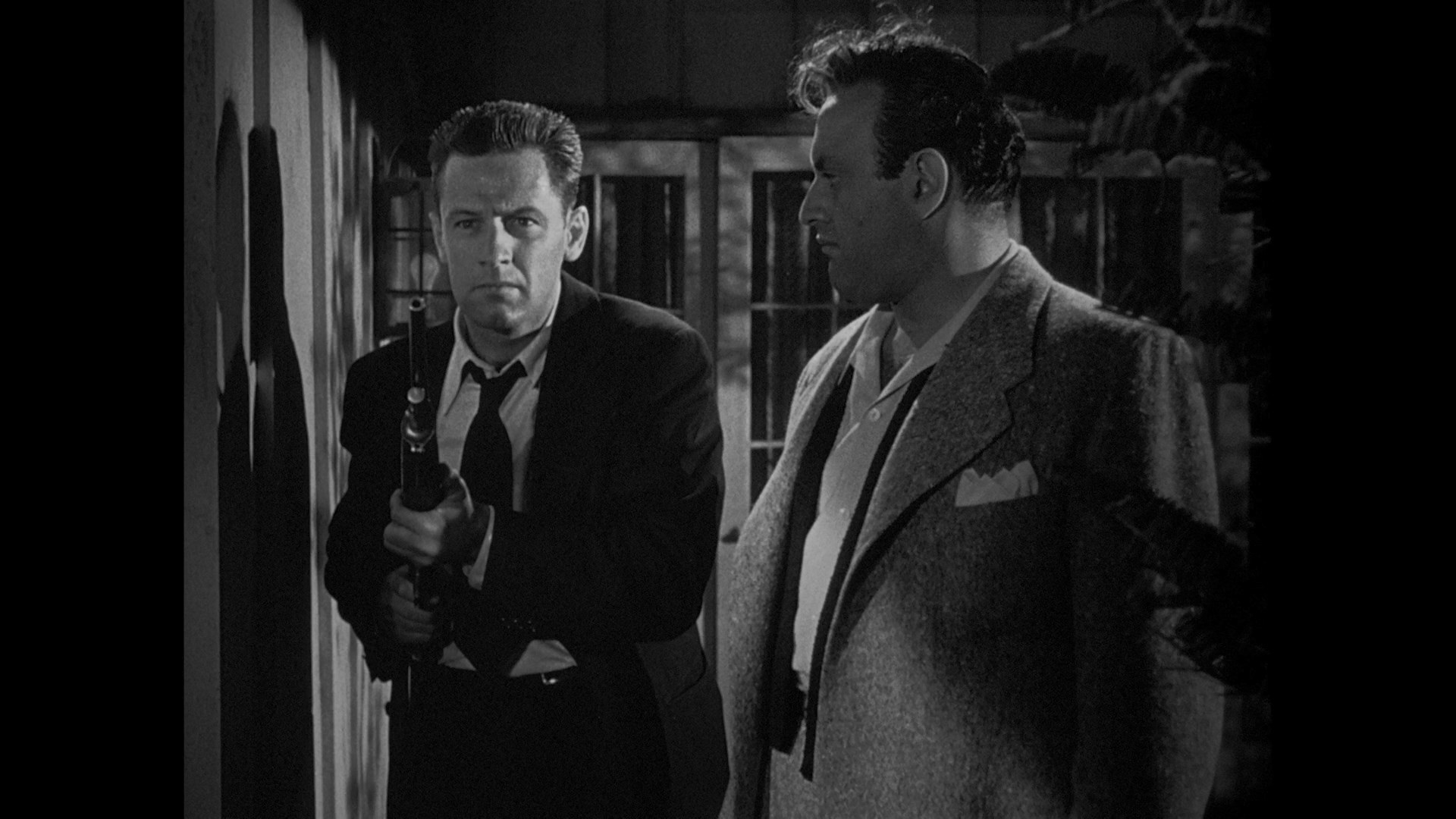 literal Golden Boy. Strangely, this one's been out of commission on home video for a long time since its RCA/Columbia VHS release back in 1988 and makes a welcome return here if you didn't catch one of its rare TV airings over the past few decades. Again the elements have been kept in prime condition, making this the first chance to see this in really prime quality for many viewers now. A new commentary by academic Eloise Ross notes how the film operates as both a noir and social issues narrative, extrapolates on the "dark" title component like a flood of other noirs, and elaborates on elements like Foch's presence, the then-recent rumba dance craze, and comparisons to the earlier film version. In "The Poised Performance" (13m47s), film historian Pamela Hutchinson gives a very informative and appreciative survey of the Dutch-born actress' career from drama school onwards that led to her distinctive screen presence and a showbiz affinity that could have gone much further behind the camera. An image gallery compiles 36 stills and lobby cards, followed by a 1940 radio production of Blind Alley from The Gulf Screen Guild Theater (23m2s) featuring Edward G Robinson, Joseph Calleia and Isabel Jewell. (Weirdly, the host tries to push this at the beginning as a "horror story!") Finally, the Three Stooges are back in 1948's Shivering Sherlocks (17m29s) with Larry, Moe, and Shemp interrogated about a car robbery and ending up at a secluded mansion mixed up with the real
literal Golden Boy. Strangely, this one's been out of commission on home video for a long time since its RCA/Columbia VHS release back in 1988 and makes a welcome return here if you didn't catch one of its rare TV airings over the past few decades. Again the elements have been kept in prime condition, making this the first chance to see this in really prime quality for many viewers now. A new commentary by academic Eloise Ross notes how the film operates as both a noir and social issues narrative, extrapolates on the "dark" title component like a flood of other noirs, and elaborates on elements like Foch's presence, the then-recent rumba dance craze, and comparisons to the earlier film version. In "The Poised Performance" (13m47s), film historian Pamela Hutchinson gives a very informative and appreciative survey of the Dutch-born actress' career from drama school onwards that led to her distinctive screen presence and a showbiz affinity that could have gone much further behind the camera. An image gallery compiles 36 stills and lobby cards, followed by a 1940 radio production of Blind Alley from The Gulf Screen Guild Theater (23m2s) featuring Edward G Robinson, Joseph Calleia and Isabel Jewell. (Weirdly, the host tries to push this at the beginning as a "horror story!") Finally, the Three Stooges are back in 1948's Shivering Sherlocks (17m29s) with Larry, Moe, and Shemp interrogated about a car robbery and ending up at a secluded mansion mixed up with the real 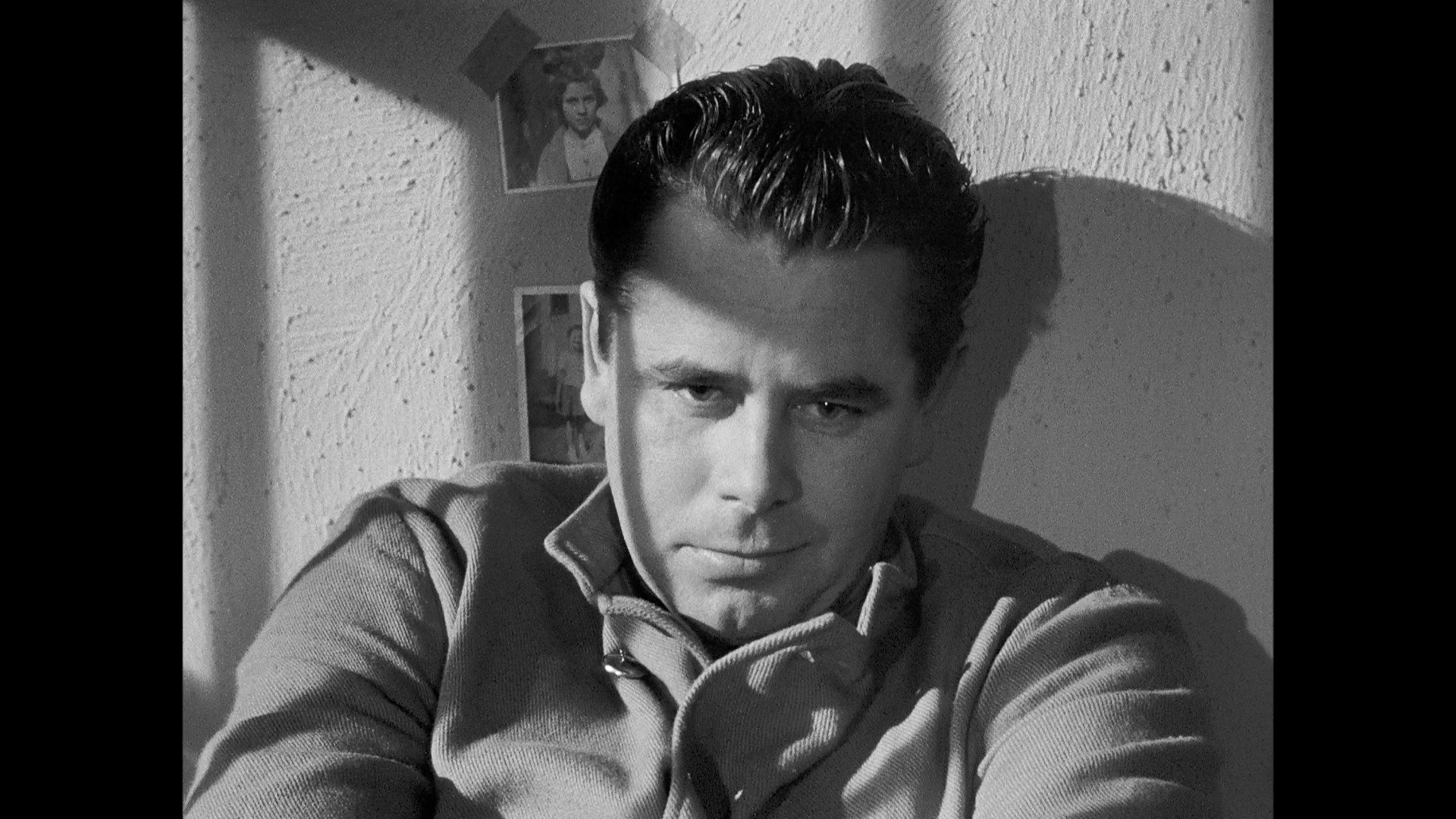 criminals.
criminals. 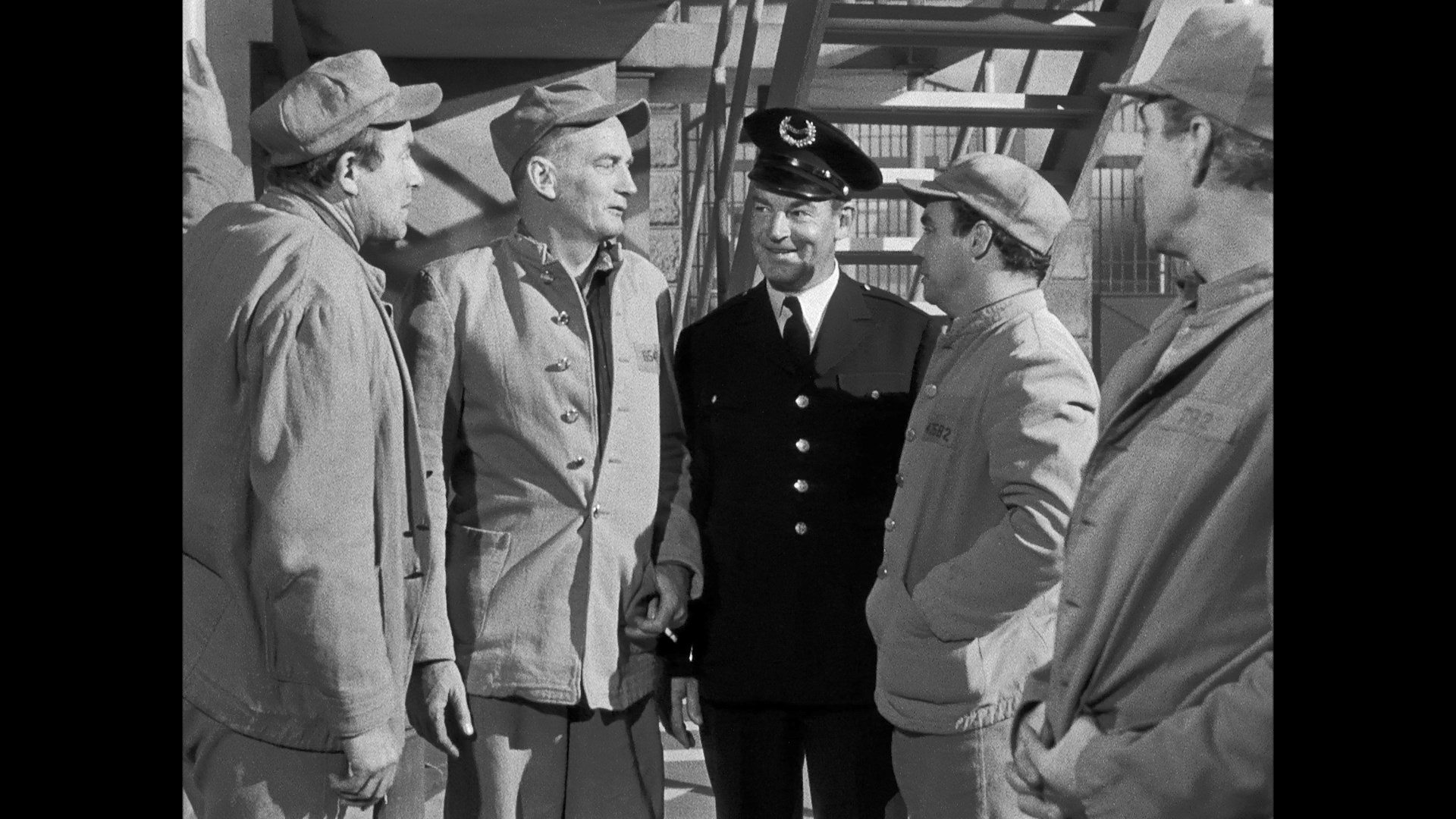 Disc three provides the other remake here, 1950's Convicted, the third Hollywood go-round for The Criminal Code. A play first filmed by Howard Hawks in 1930 and also out on standalone Blu-ray from Indicator, this was one of the first major mainstream successes about prison life and was very familiar to audiences through both its screen iterations and radio performances. Here the character names are all changed for some reason along with the title itself, but the story remains the same with Joe Hufford (Ford) sent up the river after an impulsive nightclub fight ends up in a manslaughter charge thanks to incompetent legal representation. The compassionate new warden, George Knowland (Crawford), who had been the opposing counsel in Joe's case, arrives to live on the premises with his daughter, Kay (a virtually unrecognizable Malone), and tries to help Joe adjust in a climate where, as we all know, snitches get stitches. That moral code is put to the test when Joe refuses to rat on fellow inmate Malloby (Mitchell), who has no scruples of his own, and ends up in solitary, but that's just the beginning of his problems.
Disc three provides the other remake here, 1950's Convicted, the third Hollywood go-round for The Criminal Code. A play first filmed by Howard Hawks in 1930 and also out on standalone Blu-ray from Indicator, this was one of the first major mainstream successes about prison life and was very familiar to audiences through both its screen iterations and radio performances. Here the character names are all changed for some reason along with the title itself, but the story remains the same with Joe Hufford (Ford) sent up the river after an impulsive nightclub fight ends up in a manslaughter charge thanks to incompetent legal representation. The compassionate new warden, George Knowland (Crawford), who had been the opposing counsel in Joe's case, arrives to live on the premises with his daughter, Kay (a virtually unrecognizable Malone), and tries to help Joe adjust in a climate where, as we all know, snitches get stitches. That moral code is put to the test when Joe refuses to rat on fellow inmate Malloby (Mitchell), who has no scruples of his own, and ends up in solitary, but that's just the beginning of his problems. 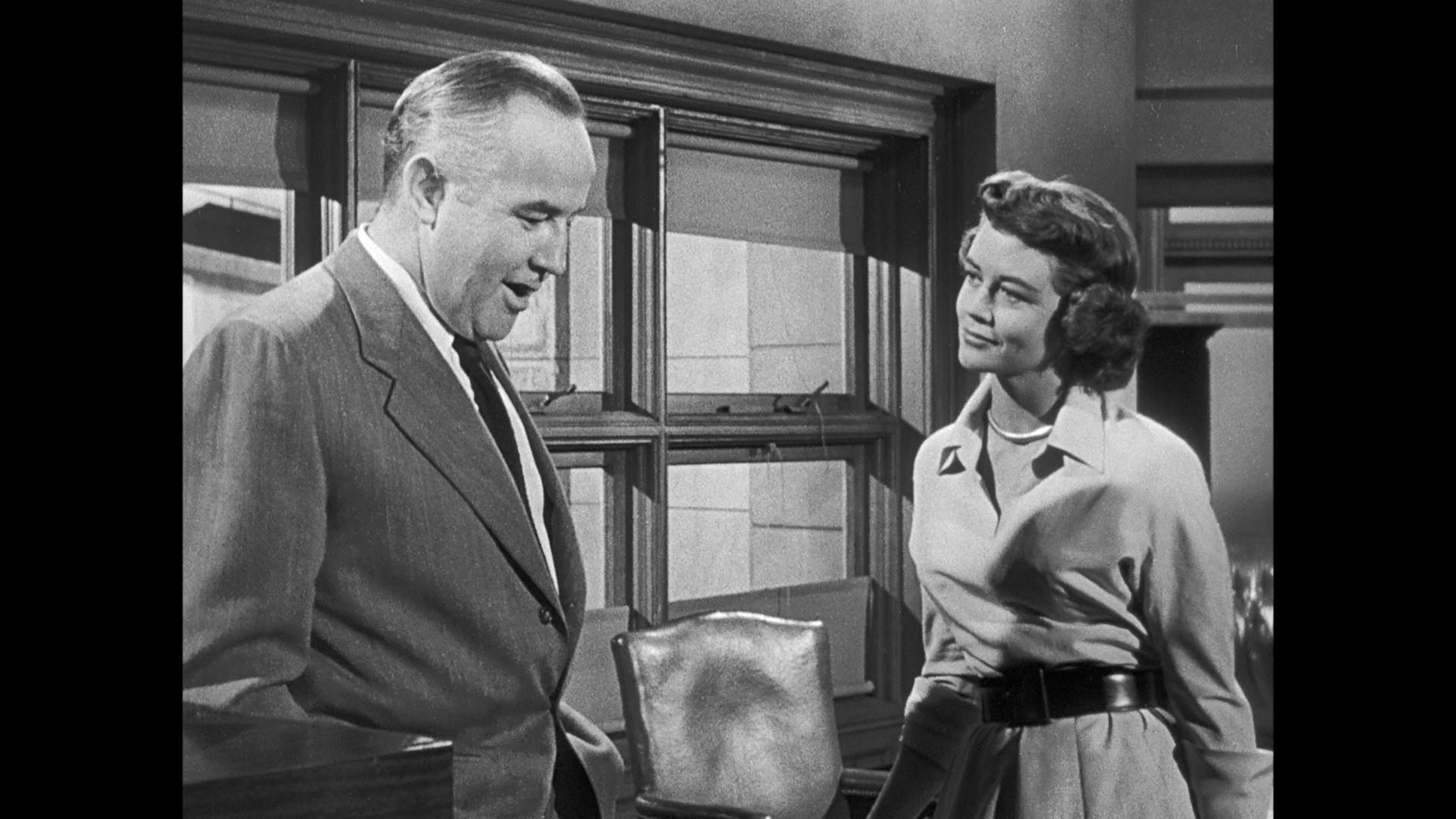 but differs significantly with its tone featuring that set-bound Columbia feel from the turn of the decade and the casting of Ford, an all-American good guy (even though he was really Canadian!) who plays nicely off of the always solid Crawford (fresh off his Oscar
but differs significantly with its tone featuring that set-bound Columbia feel from the turn of the decade and the casting of Ford, an all-American good guy (even though he was really Canadian!) who plays nicely off of the always solid Crawford (fresh off his Oscar 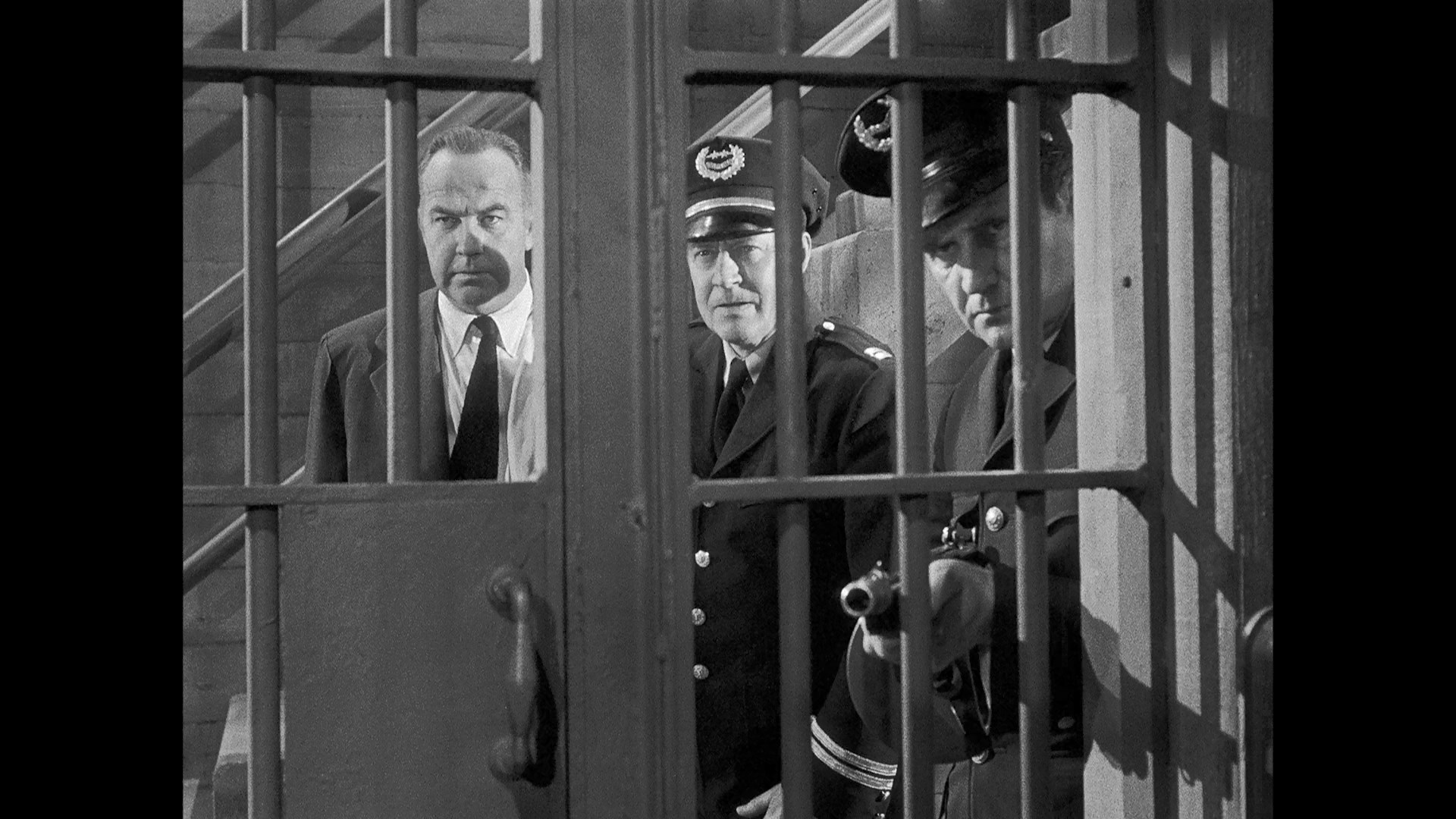 win for All the King's Men). Interestingly, the character of Malloby isn't as vivid here with Mitchell downplaying it more than Boris Karloff's celebrated, star-making turn in the Hawks film. Widely shown on TV for years, Convicted first showed up on DVD in 2014 from TCM in the Glenn Ford: Undercover Crimes set along with Framed, The Undercover Man, The Lady in Question, and Mr. Soft Touch. The Blu-ray features an audio commentary by this writer and Troy Howarth so that obviously can't be assessed here, but hopefully you'll find it worthwhile. Jonathan Bygraves' "Codes and Convictions" video essay is ported over from Indicator's The Criminal Code edition, comparing the various movie incarnations including the elusive Spanish and French-language versions, followed by a hefty 65-image gallery with tons of fun production and promotional stills (including some of the recently departed Martha Stewart). In 1941's So Long Mr. Chumps (17m24s), Curly, Larry, and Moe are street cleaners who are offered a hefty reward if they go incognito to jail to find an innocent man. Good luck following the logic of the premise, but it's another feast of physical gags including the trio doing hard labor smashing rocks while
win for All the King's Men). Interestingly, the character of Malloby isn't as vivid here with Mitchell downplaying it more than Boris Karloff's celebrated, star-making turn in the Hawks film. Widely shown on TV for years, Convicted first showed up on DVD in 2014 from TCM in the Glenn Ford: Undercover Crimes set along with Framed, The Undercover Man, The Lady in Question, and Mr. Soft Touch. The Blu-ray features an audio commentary by this writer and Troy Howarth so that obviously can't be assessed here, but hopefully you'll find it worthwhile. Jonathan Bygraves' "Codes and Convictions" video essay is ported over from Indicator's The Criminal Code edition, comparing the various movie incarnations including the elusive Spanish and French-language versions, followed by a hefty 65-image gallery with tons of fun production and promotional stills (including some of the recently departed Martha Stewart). In 1941's So Long Mr. Chumps (17m24s), Curly, Larry, and Moe are street cleaners who are offered a hefty reward if they go incognito to jail to find an innocent man. Good luck following the logic of the premise, but it's another feast of physical gags including the trio doing hard labor smashing rocks while  lugging around a ball and
lugging around a ball and  chain.
chain.  First seen on DVD in that same Columbia noir set as Johnny O'Clock mentioned above, this is a swift and entertaining
First seen on DVD in that same Columbia noir set as Johnny O'Clock mentioned above, this is a swift and entertaining  ride that throws in some fun unexpected elements like a juicy turn from Gale Robbins as a sort-of femme fatale who works in her considerable movie musical experience here with a glittering nightclub number. O'Brien was apparently incapable of giving an uninteresting performance, and that's true here as well as he etches out a frustrated and frequently questionable officer of the law who foreshadows the types who would turn up later in the novels of Joseph Wambaugh. Douglas also comes up with some inventive ways of working around the studio sets by mounting the camera from the vantage point of the car itself, giving the film a feeling of constantly being in motion that pays off nicely in the expected violent climax. The Indicator disc is another pleasing presentation comparable to the others and comes with an extremely brisk, packed audio commentary by entertainment journalist Bryan Reesman who notes similarities to a British noir-ish cop thriller from the same year he also tackled (The Blue Lamp), the film's arguable status as Hollywood's first "buddy cop" movie, and ties to a slew of TV shows ranging from Adam-12 to Father Knows Best. In "Categorically Dependable" (16m7s), Kim Newman tackles the extensive output of Gordon Douglas starting off with a bit of context from Andrew Sarris and explains the value of a filmmaker who falls far outside of what became embraced by the auteur theory. (And yes, he does mention the camp extravaganza Sincerely Yours.) The trailer and a 47-image gallery are also included, and the Three Stooges walk the beat in 1943's Dizzy Detectives (18m36s) as three inept carpenters who get recruited to the force to hunt down a burglar who operates
ride that throws in some fun unexpected elements like a juicy turn from Gale Robbins as a sort-of femme fatale who works in her considerable movie musical experience here with a glittering nightclub number. O'Brien was apparently incapable of giving an uninteresting performance, and that's true here as well as he etches out a frustrated and frequently questionable officer of the law who foreshadows the types who would turn up later in the novels of Joseph Wambaugh. Douglas also comes up with some inventive ways of working around the studio sets by mounting the camera from the vantage point of the car itself, giving the film a feeling of constantly being in motion that pays off nicely in the expected violent climax. The Indicator disc is another pleasing presentation comparable to the others and comes with an extremely brisk, packed audio commentary by entertainment journalist Bryan Reesman who notes similarities to a British noir-ish cop thriller from the same year he also tackled (The Blue Lamp), the film's arguable status as Hollywood's first "buddy cop" movie, and ties to a slew of TV shows ranging from Adam-12 to Father Knows Best. In "Categorically Dependable" (16m7s), Kim Newman tackles the extensive output of Gordon Douglas starting off with a bit of context from Andrew Sarris and explains the value of a filmmaker who falls far outside of what became embraced by the auteur theory. (And yes, he does mention the camp extravaganza Sincerely Yours.) The trailer and a 47-image gallery are also included, and the Three Stooges walk the beat in 1943's Dizzy Detectives (18m36s) as three inept carpenters who get recruited to the force to hunt down a burglar who operates 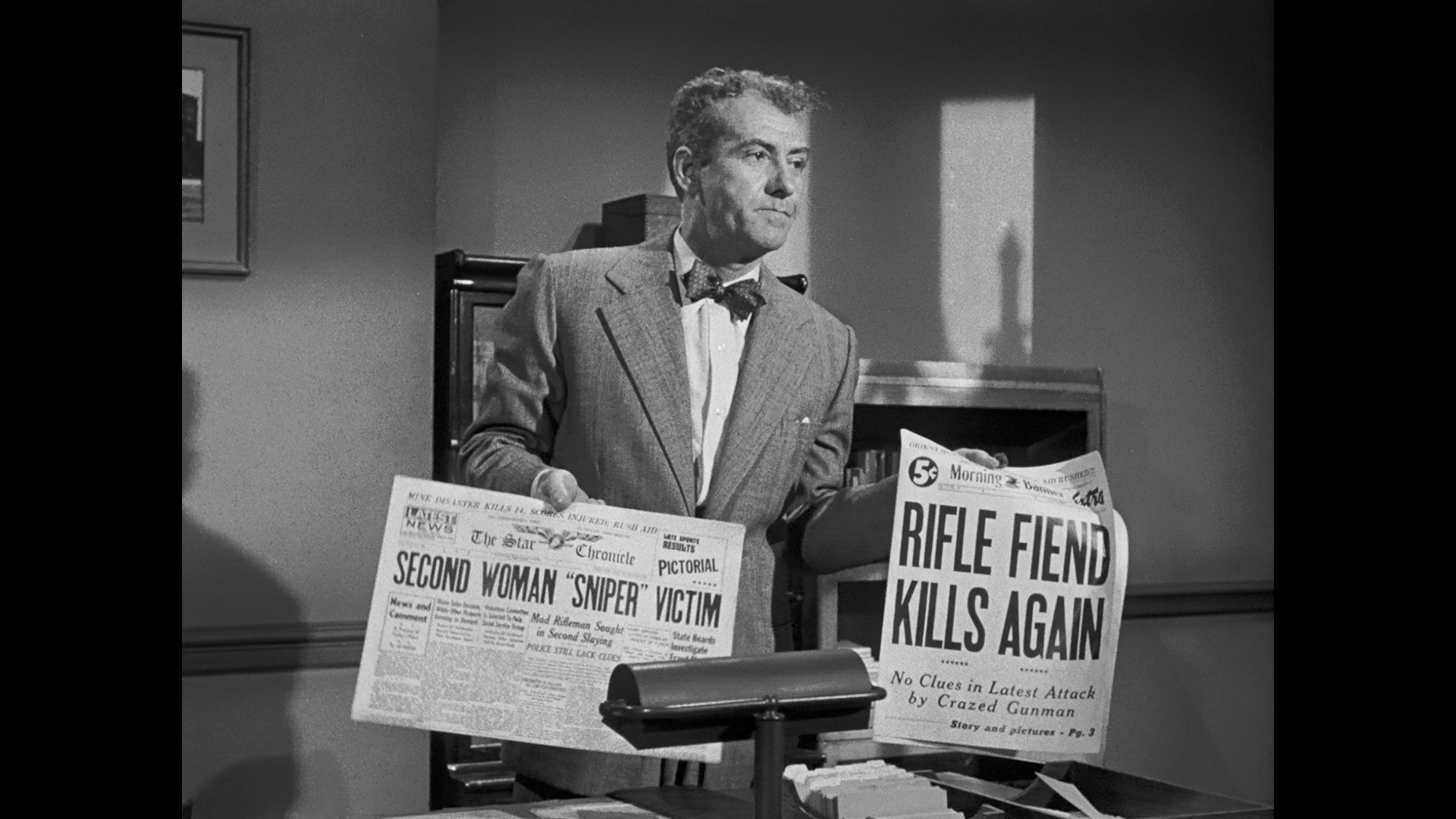 in an ape suit.
in an ape suit. 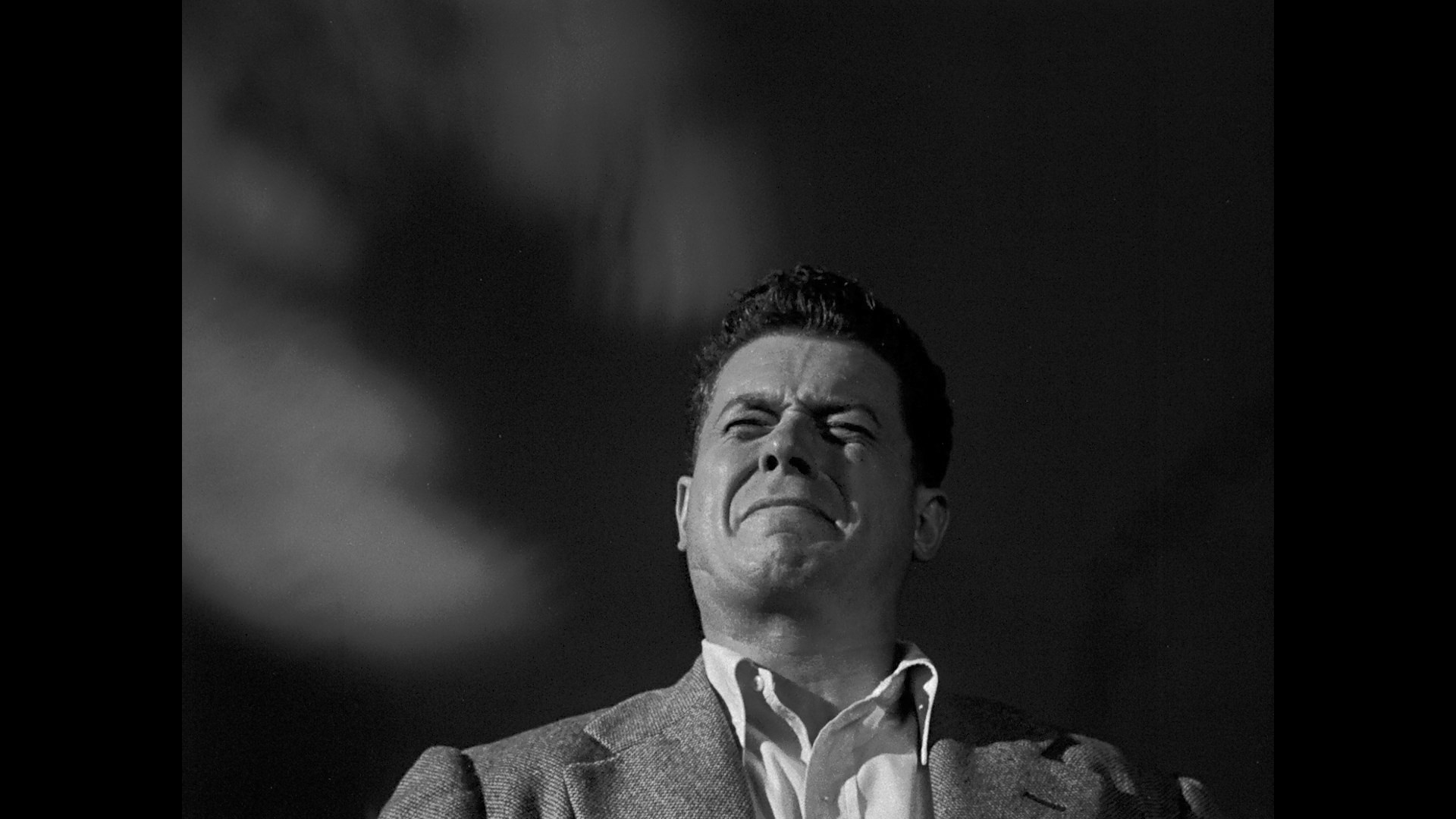 Film number five is one that garnered a hefty amount of buzz in the film community when it first hit DVD back in 2009 as part of the Columbia Pictures Film Noir Classics 1 box. Made by The Stanley Kramer Company and sporting an opening disclaimer that this is a serious look at the "story of a man whose enemy was womankind," this was part of a run of very solid genre films from director Edward Dmytryk that are often overshadowed by the one big dramatic heavy hitter from that period, The Caine Mutiny, as well as his own controversial role in the HUAC hearings as one of the Hollywood Ten after which this film marked his comeback of sorts. What we have here is essentially the granddaddy of the sniper attack movie, something that would become more familiar later with films like Targets and TV's The Deadly Tower (both inspired to different degrees by Charles Whitman's 1966 shooting rampage in Austin, Texas). In fact, Harry Novak even engineered a scuzzy semi-remake of this film as Zero In and Scream, which would make for a very weird and queasy double feature.
Film number five is one that garnered a hefty amount of buzz in the film community when it first hit DVD back in 2009 as part of the Columbia Pictures Film Noir Classics 1 box. Made by The Stanley Kramer Company and sporting an opening disclaimer that this is a serious look at the "story of a man whose enemy was womankind," this was part of a run of very solid genre films from director Edward Dmytryk that are often overshadowed by the one big dramatic heavy hitter from that period, The Caine Mutiny, as well as his own controversial role in the HUAC hearings as one of the Hollywood Ten after which this film marked his comeback of sorts. What we have here is essentially the granddaddy of the sniper attack movie, something that would become more familiar later with films like Targets and TV's The Deadly Tower (both inspired to different degrees by Charles Whitman's 1966 shooting rampage in Austin, Texas). In fact, Harry Novak even engineered a scuzzy semi-remake of this film as Zero In and Scream, which would make for a very weird and queasy double feature. 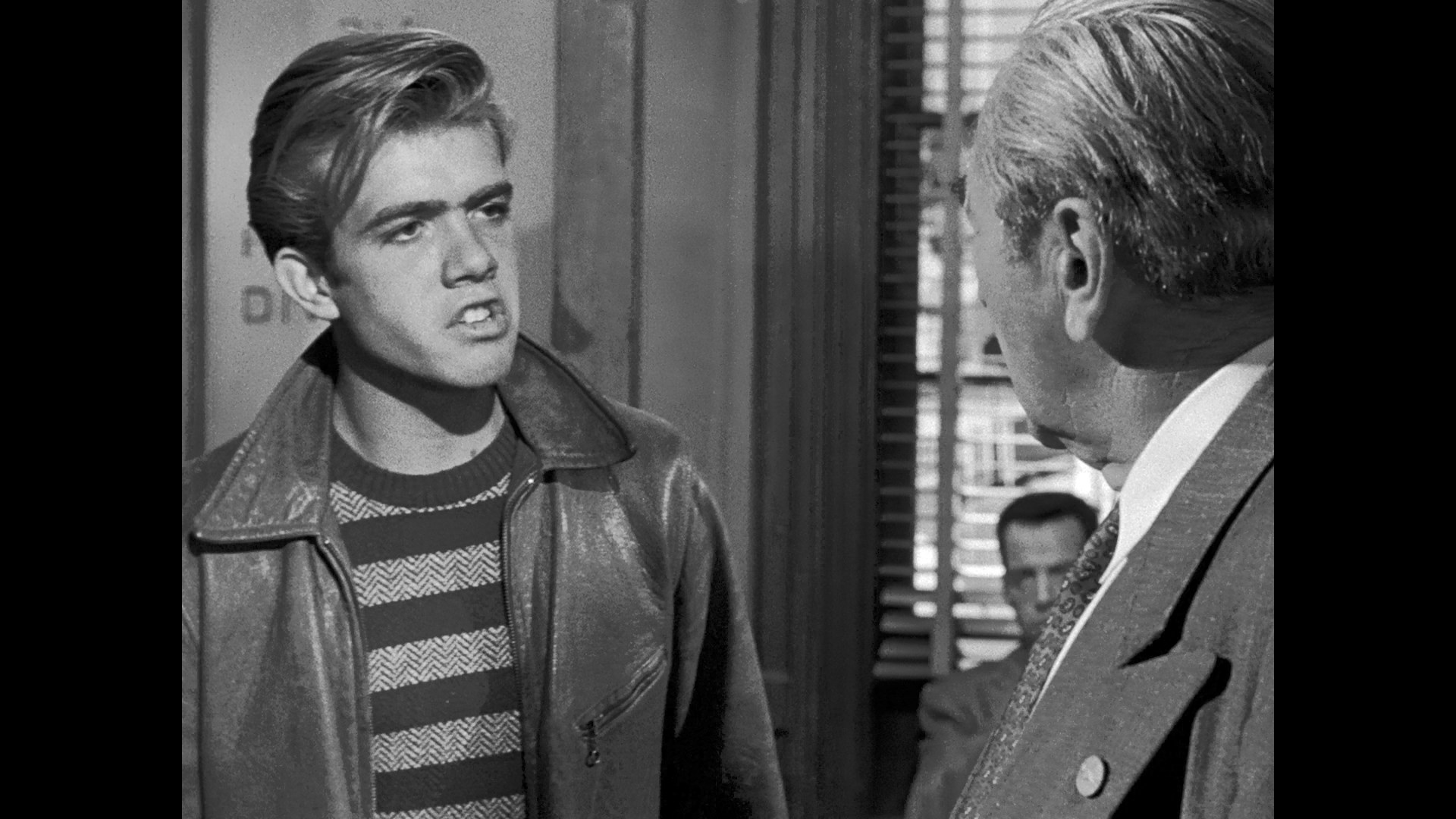 to stop him, which comes into play when the young
to stop him, which comes into play when the young 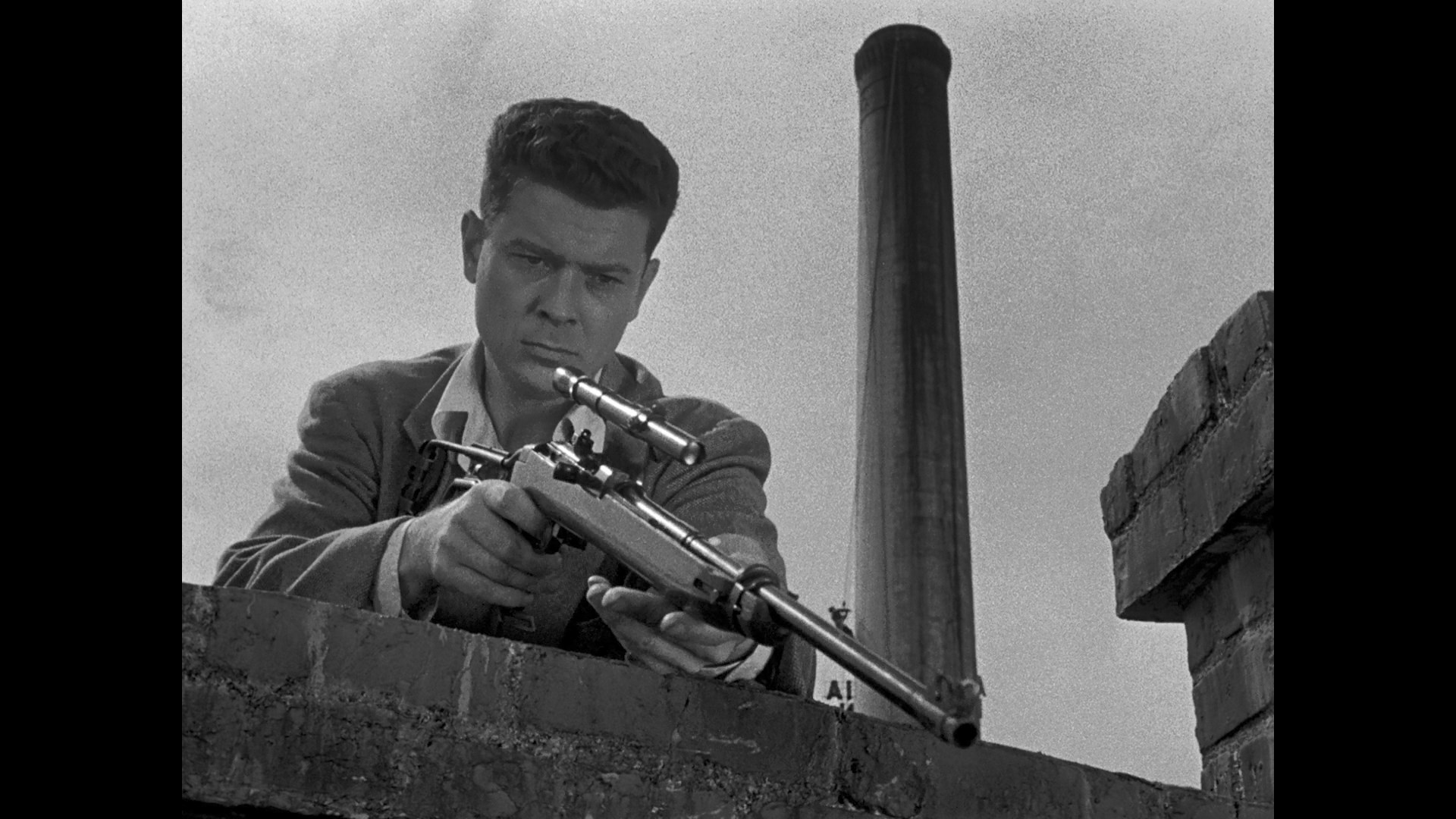 man pulls out a rifle and starts shooting random female pedestrians. Shot around San Francisco with a naturalistic style that seems indebted to Italian neorealism at times, the film keeps up a steady amount of tension throughout while also operating a showcase for familiar character actors ranging from Marie Windsor to Richard Kiley and Wally Cox. The subject matter is handled with an admirable amount of delicacy, all things considered, and it was enough of a prestige film with Kramer attached to snag an Oscar nomination for its original story. The Indicator edition carries over the Martin Scorsese intro (3m17s) created for the 2009 DVD and that disc's thorough and engaging audio commentary by the Film Noir Foundation’s Eddie Muller, talking about the film's origins conceived by writers Edna and Edward Anhalt, the novelty of the real locations used in the film rather than studio exteriors, and the sociological concerns at play concerning criminal psychology and justice. The trailer and a really grim 43-image gallery are included, while 1953's Three Lives (23m3s) is another United Jewish Appeal short this time bringing back Dmytryk, Franz, and the Anhalts for a look at how three lives were impacted by the organization. This one hasn't been kept in the greatest of shape, but it's wild to see Charlton Heston, Jane Wyman, Franz, and Randolph Scott turning up as your hosts on a movie set offering the framework for a mixture of stock footage and dramatizations. Continuing the three theme but little else in 1945's Three Pests in a Mess (15m20s) with The Three Stooges going to extravagant lengths to obtain a patent for their fly-catching machine, which puts them in the crosshairs of some gun-happy criminals that ends up with mass confusion involving a mannequin and a cemetery. This one's actually perfect for Halloween viewing, complete with gags involving skeleton and devil costumes.
man pulls out a rifle and starts shooting random female pedestrians. Shot around San Francisco with a naturalistic style that seems indebted to Italian neorealism at times, the film keeps up a steady amount of tension throughout while also operating a showcase for familiar character actors ranging from Marie Windsor to Richard Kiley and Wally Cox. The subject matter is handled with an admirable amount of delicacy, all things considered, and it was enough of a prestige film with Kramer attached to snag an Oscar nomination for its original story. The Indicator edition carries over the Martin Scorsese intro (3m17s) created for the 2009 DVD and that disc's thorough and engaging audio commentary by the Film Noir Foundation’s Eddie Muller, talking about the film's origins conceived by writers Edna and Edward Anhalt, the novelty of the real locations used in the film rather than studio exteriors, and the sociological concerns at play concerning criminal psychology and justice. The trailer and a really grim 43-image gallery are included, while 1953's Three Lives (23m3s) is another United Jewish Appeal short this time bringing back Dmytryk, Franz, and the Anhalts for a look at how three lives were impacted by the organization. This one hasn't been kept in the greatest of shape, but it's wild to see Charlton Heston, Jane Wyman, Franz, and Randolph Scott turning up as your hosts on a movie set offering the framework for a mixture of stock footage and dramatizations. Continuing the three theme but little else in 1945's Three Pests in a Mess (15m20s) with The Three Stooges going to extravagant lengths to obtain a patent for their fly-catching machine, which puts them in the crosshairs of some gun-happy criminals that ends up with mass confusion involving a mannequin and a cemetery. This one's actually perfect for Halloween viewing, complete with gags involving skeleton and devil costumes.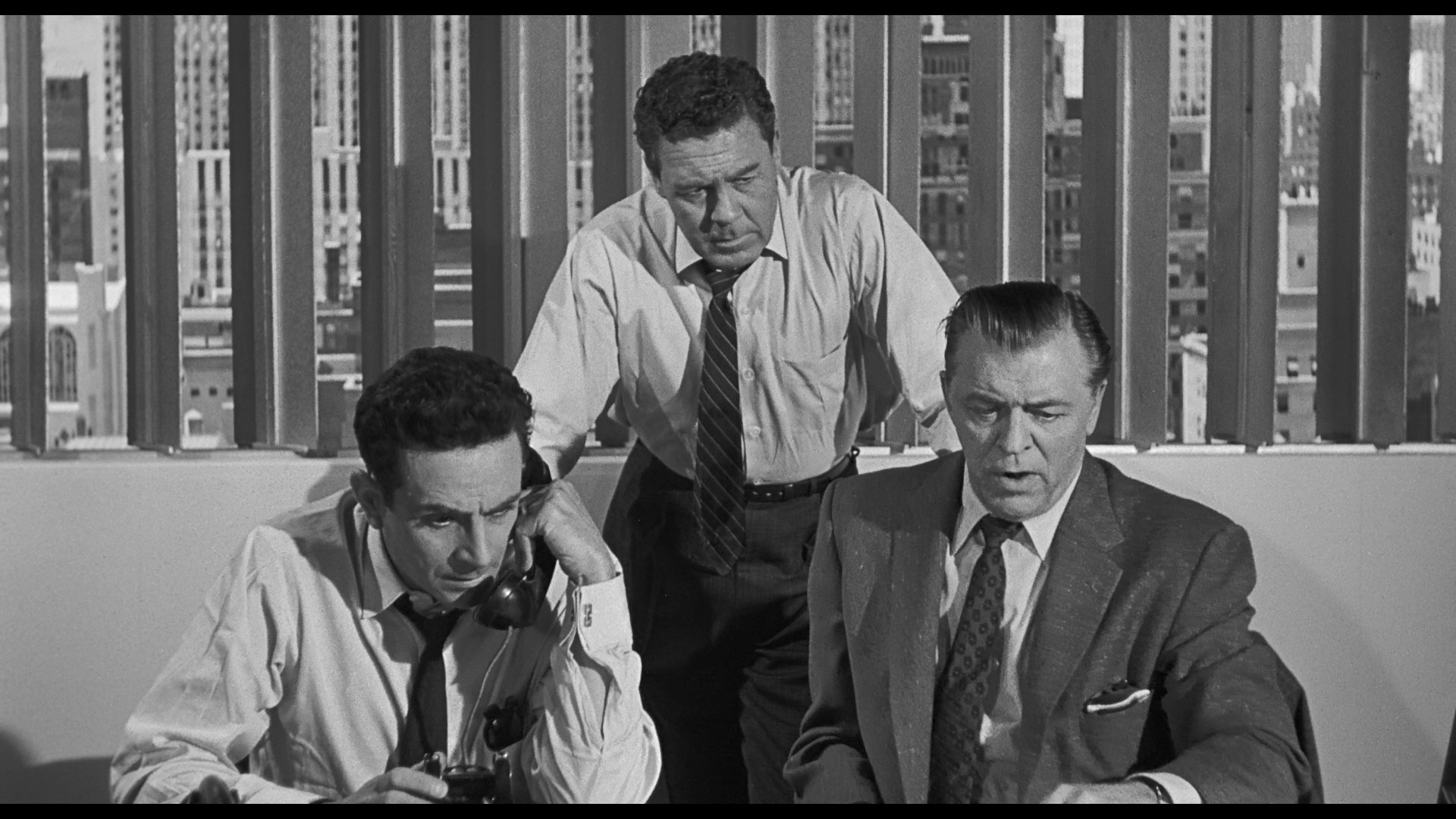 City of Fear from 1959, a follow-up of sorts to the previous year's superb Murder by Contract reuniting director Irving Lerner and star Vince
City of Fear from 1959, a follow-up of sorts to the previous year's superb Murder by Contract reuniting director Irving Lerner and star Vince 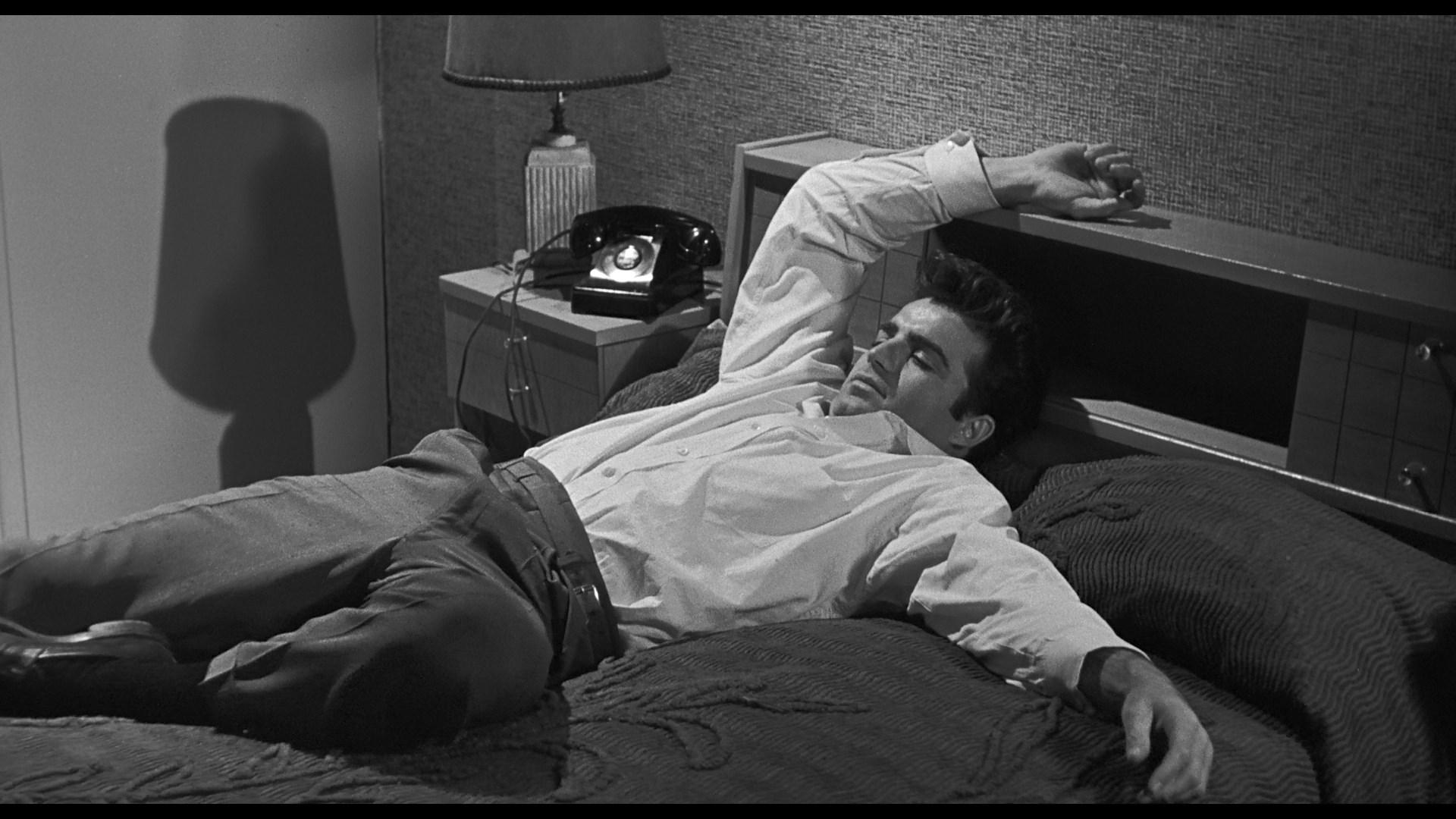 Edwards. This one hasn't gotten quite as much traction as that earlier film, even with its placement in the 2010 Columbia Pictures Film Noir Classics II set (rubbing shoulders with Human Desire, The Brothers Rico, Nightfall, and Pushover). However, it's rather potent viewing now with its theme of a city at risk from contamination, putting this in tiny company with Elia Kazan's Panic in the Streets from 1950 as film noir viewing of choice during the pandemic era. Edwards chucks his pretty boy persona out the window here as Vince Ryker, first seen speeding through the night in a car with his fellow inmate after escaping from prison. Vince is toting along a canister he's swiped that he believes contains a pound of heroin that could turn a quick profit, but it's actually housing a dangerously radioactive substance, Cobalt-60. Disguising himself as a bespectacled businessman, Vince makes his way into San Francisco and starts to sweat profusely as the authorities and scientists desperately scramble to find him before the rest of the population is contaminated as well.
Edwards. This one hasn't gotten quite as much traction as that earlier film, even with its placement in the 2010 Columbia Pictures Film Noir Classics II set (rubbing shoulders with Human Desire, The Brothers Rico, Nightfall, and Pushover). However, it's rather potent viewing now with its theme of a city at risk from contamination, putting this in tiny company with Elia Kazan's Panic in the Streets from 1950 as film noir viewing of choice during the pandemic era. Edwards chucks his pretty boy persona out the window here as Vince Ryker, first seen speeding through the night in a car with his fellow inmate after escaping from prison. Vince is toting along a canister he's swiped that he believes contains a pound of heroin that could turn a quick profit, but it's actually housing a dangerously radioactive substance, Cobalt-60. Disguising himself as a bespectacled businessman, Vince makes his way into San Francisco and starts to sweat profusely as the authorities and scientists desperately scramble to find him before the rest of the population is contaminated as well. 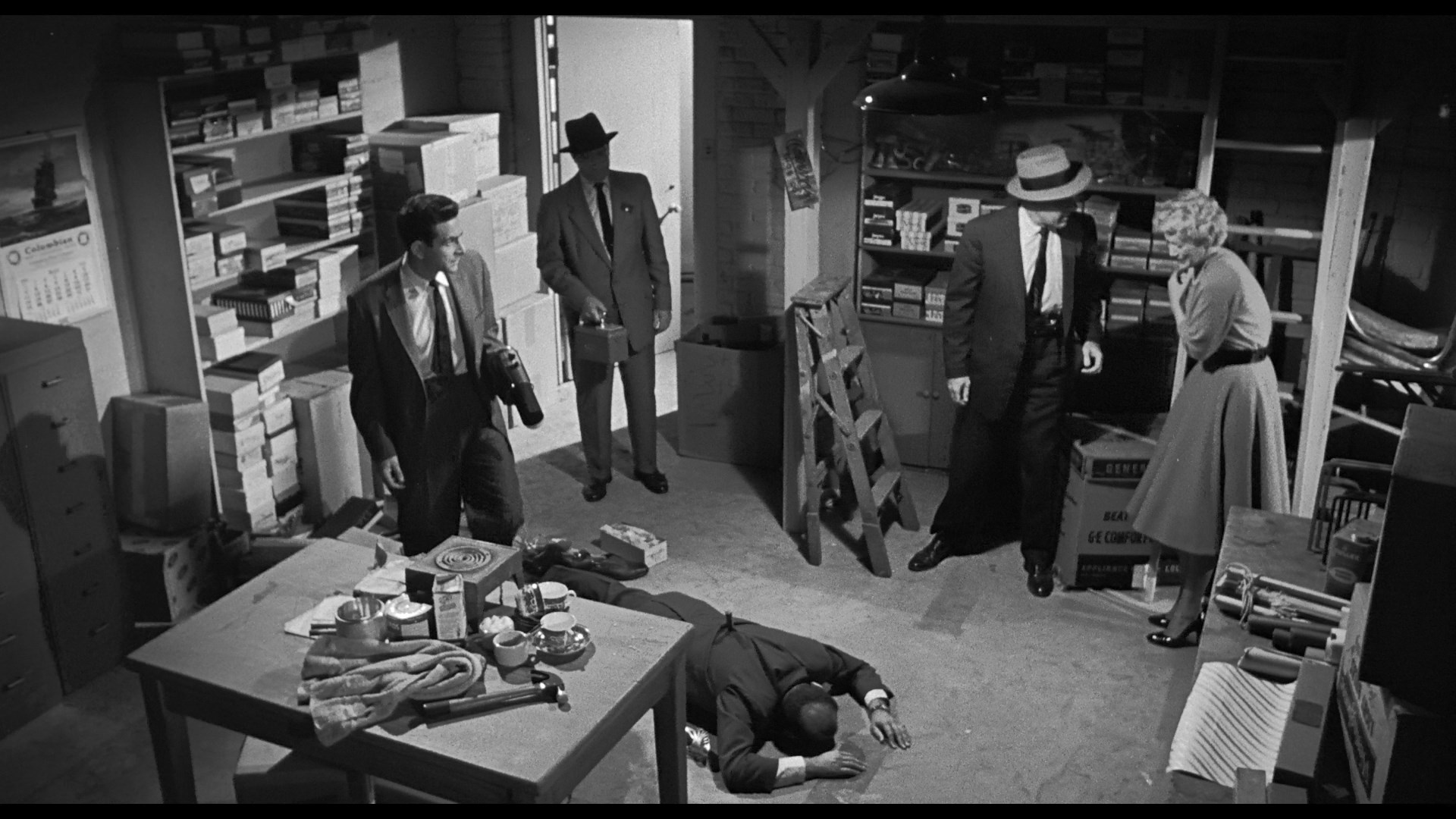 rather than this film in particular. A new audio commentary by Adrian Martin touches on the pandemic connections and draws in comparisons to a number of other names like Godard while expounding on the traits that exemplify noir, particularly its portrayals of city life. Also included are the trailer and a 30-image gallery, while Lerner gets represented extensively in
rather than this film in particular. A new audio commentary by Adrian Martin touches on the pandemic connections and draws in comparisons to a number of other names like Godard while expounding on the traits that exemplify noir, particularly its portrayals of city life. Also included are the trailer and a 30-image gallery, while Lerner gets represented extensively in 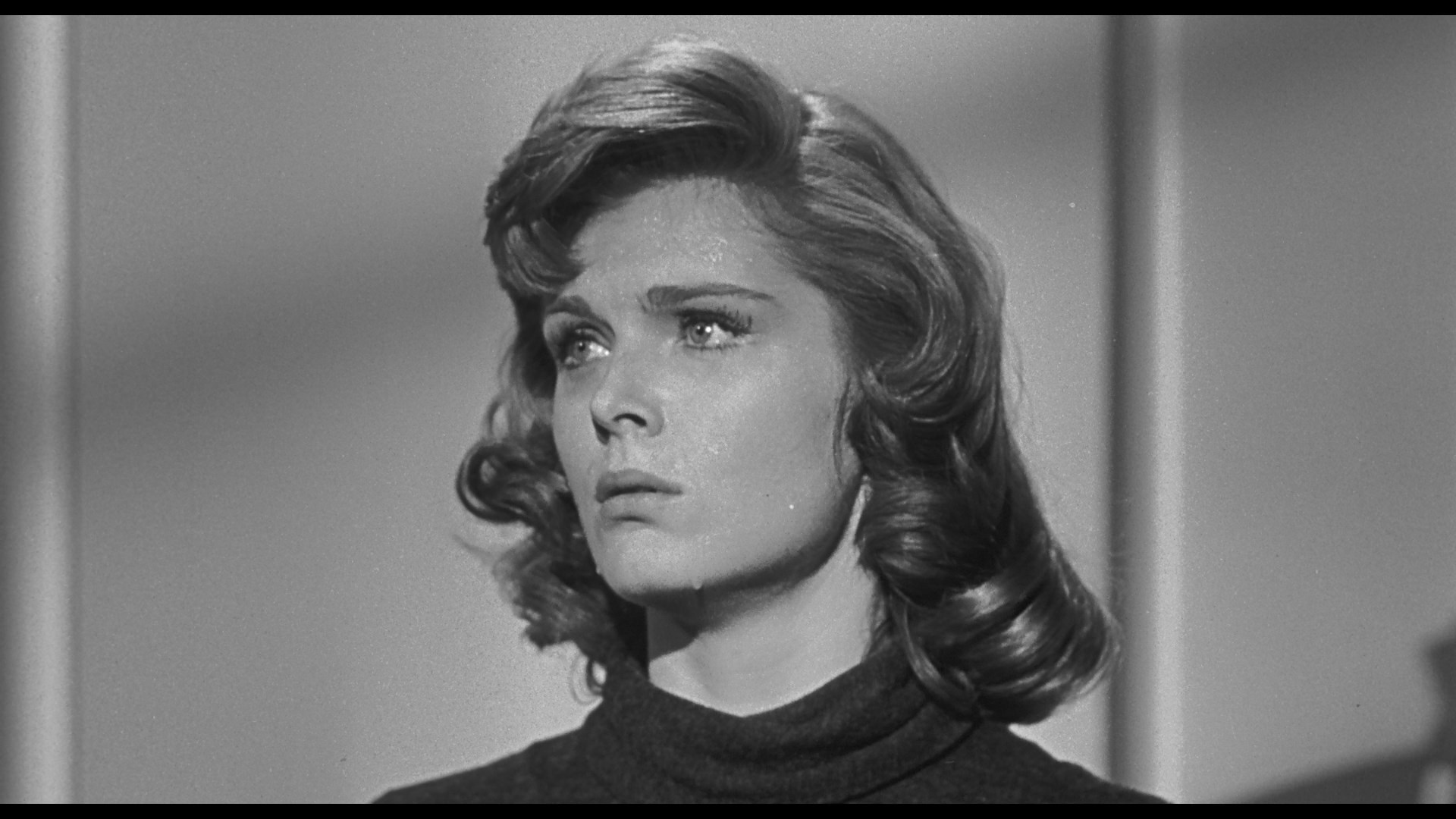 three additional shorts including 1943's The Autobiography of a "Jeep" (9m29s), which he directed. Complete with a brisk commentary by Jeremy Arnold, it's a fascinating curio commissioned by FDR as part of a patriotic newsreel line -- in this case basically touting the value of the then-recent vehicle in a variety of military capacities. Lerner's role as a producer is spotlighted with 1944's Hymn of the Nations (28m58s), a Verdi performance by conductor Arturo Toscanini and the NBC Symphony Orchestra (presented here in its rarely-seen full version with a Russian segment at the end among its climactic patriotic anthems), and 1945's The Cummington Story (20m1s), essentially a salute to American neighborly behavior from the U.S. Office of War Information showing how refugees can find new homes in American towns. Finally, 1958's Oil's Well That Ends Well (16m13s) is our final Three Stooges offering (and the only widescreen one here) as Larry, Moe, and Joe get a letter from their father urging them go find a wealth of uranium(!) at his mining facility, which in turns lead to a much more splashy discovery. The sturdy box also comes with a 120-page book featuring essays by Peter Stanfield, David Cairns, Michał Oleszczyk, Adam Scovell, Fintan McDonagh, Andrew Nette, Jeff Billington, and Ramsey Campbell (on the Stooges!), plus an assortment of archival articles and interviews, with fascinating notes along the way about everything from Dmytryk and Guffey to composer George Duning and the strain of atomic-themed noir thrillers.
three additional shorts including 1943's The Autobiography of a "Jeep" (9m29s), which he directed. Complete with a brisk commentary by Jeremy Arnold, it's a fascinating curio commissioned by FDR as part of a patriotic newsreel line -- in this case basically touting the value of the then-recent vehicle in a variety of military capacities. Lerner's role as a producer is spotlighted with 1944's Hymn of the Nations (28m58s), a Verdi performance by conductor Arturo Toscanini and the NBC Symphony Orchestra (presented here in its rarely-seen full version with a Russian segment at the end among its climactic patriotic anthems), and 1945's The Cummington Story (20m1s), essentially a salute to American neighborly behavior from the U.S. Office of War Information showing how refugees can find new homes in American towns. Finally, 1958's Oil's Well That Ends Well (16m13s) is our final Three Stooges offering (and the only widescreen one here) as Larry, Moe, and Joe get a letter from their father urging them go find a wealth of uranium(!) at his mining facility, which in turns lead to a much more splashy discovery. The sturdy box also comes with a 120-page book featuring essays by Peter Stanfield, David Cairns, Michał Oleszczyk, Adam Scovell, Fintan McDonagh, Andrew Nette, Jeff Billington, and Ramsey Campbell (on the Stooges!), plus an assortment of archival articles and interviews, with fascinating notes along the way about everything from Dmytryk and Guffey to composer George Duning and the strain of atomic-themed noir thrillers.![]()